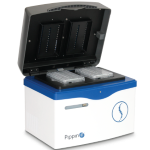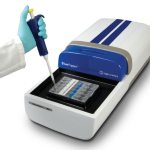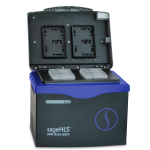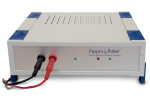Chasing non-existent “microRNAs” in cancer
April 2025
Authors:
Ayla Orang, Nicholas I. Warnock, Melodie Migault, B. Kate Dredge, Andrew G. Bert, Julie M. Bracken, Philip A. Gregory, Katherine A. Pillman, Gregory J. Goodall & Cameron P. Bracken
Abstract:
“MicroRNAs (miRNAs) are important regulators of gene expression whose dysregulation is widely linked to tumourigenesis, tumour progression and Epithelial-Mesenchymal Transition (EMT), a developmental process that promotes metastasis when inappropriately activated. However, controversy has emerged regarding how many functional miRNAs are encoded in the genome, and to what extent non-regulatory products of RNA degradation have been mis-identified as miRNAs. Central to miRNA function is their capacity to associate with an Argonaute (AGO) protein and form an RNA-Induced Silencing Complex (RISC), which mediates target mRNA suppression. We report that numerous “miRNAs” previously reported in EMT and cancer contexts, are not incorporated into RISC and are not capable of endogenously silencing target genes, despite the fact that hundreds of publications in the cancer field describe their roles. Apparent function can be driven through the expression of artificial miRNA mimics which is not necessarily reflective of any endogenous gene regulatory function. We present biochemical and bioinformatic criteria that can be used to distinguish functional miRNAs from mistakenly annotated RNA fragments..”
Sage Science Products:
Pippin Prep was used to size select RNA libraries.
Methods Excerpt:
“Amplified barcoded libraries were then size selected using auto gel-purification Pippin prep 3% agarose (SAGE science) which targets ranges from 100-250 bp. Libraries (size between 180-190 bp) were then confirmed by Qubit HS DNA and Bioanalyzer HS DNA assay for size and concentration. The libraries were then pooled together in equimolar amounts and sequenced using an Illumina Nextseq 500 using a 1 × 75 cycle high output kit.”
Author Affiliations:
Centre for Cancer Biology, an alliance of SA Pathology and University of South Australia, Adelaide, South Australia, Australia
ACRF Cancer Genomics Facility, Centre for Cancer Biology, SA Pathology, Adelaide, South Australia, Australia
Adelaide Centre for Epigenetics, School of Biomedicine, Faculty of Health and Medical Sciences, University of Adelaide, Adelaide, South Australia, Australia
School of Medicine, Discipline of Medicine, University of Adelaide, Adelaide, South Australia, Australia
School of Biological Sciences, Faculty of Sciences, University of Adelaide, Adelaide, South Australia, Australia
Nature Oncogenesis
DOI:10.1038/s41389-025-00550-9
Telomere-to-telomere reference genome reveals subgenome divergence and large structural variants in Capsella bursa-pastoris (Brassicaceae)
March 2025
Authors:
Xin Liu, Lu Liu, Hai-Fei Yan, Xue-Jun Ge, Hui-Run Huang
Abstract:
“Capsella is a model genus for studying polyploid speciation and mating system transitions. Here, we report a subgenome-resolved telomere-to-telomere reference genome of Capsella bursa-pastoris, the only polyploid species in the genus, generated by incorporating PacBio HiFi reads, Nanopore ultra-long reads, and Hi-C data. The assembled genome, named Cbp_T2T, consisted of 16 chromosomes, with 8 in each of the two subgenomes. The genome size of the final assembly was 330.91 Mb. Multiple evaluation methods confirmed the contiguity (contig N50: 20.28 Mb), completeness (Benchmarking Universal Single – Copy Orthologue: 98.70%), and accuracy (QV: 35.76) of the genome. Repetitive sequences accounted for 37.04% of the genome size. In total, 27,626 and 28,096 protein-coding genes were annotated in the two subgenomes, respectively. Large structural variants were observed between the two subgenomes. Additionally, two large inversions on chromosomes 6 and 7, spanning approximately 1.93 and 2.33 Mb, respectively, were detected by comparing Cbp_T2T to a previously published chromosome-scale C. bursa-pastoris assembly. This high-quality reference genome will facilitate evolutionary biological and functional genomic studies in Capsella species.”
Sage Science Products:
SageHLS was used to size select HMW DNA.
Methods Excerpt:
“Approximately 8–10 μg of DNA was size-selected (>50 kb) with the SageHLS High Molecular Weight library system (Sage Science, USA) and used for library construction with the Oxford Nanopore SQK-LSK109 Kit following the manufacturers’ instructions.”
Author Affiliations:
Key Laboratory of National Forestry and Grassland Administration on Plant Conservation and Utilization in Southern China, South China Botanical Garden, Chinese Academy of Sciences, Guangzhou, China
South China National Botanical Garden, Guangzhou, China3University of Chinese Academy of Sciences, Beijing, China
State Key Laboratory of Biocontrol, Guangdong Provincial Key Laboratory of Plant Stress Biology, School of Life Sciences, Sun Yat-sen University, Guangzhou, China
State Key Laboratory of Plant Diversity and Specialty Crops, South China Botanical Garden, Chinese Academy of Sciences, Guangzhou, China
Biological Diversity
DOI: 10.1002/bod2.70001
Integrated analysis of miRNAs and mRNAs in thousands of single cells
January 2025
Authors:
Jia Li, Jing Tian & Tao Cai
Abstract:
“The simultaneous sequencing of multiple types of biomolecules can facilitate understanding various forms of regulation occurring in cells. Cosequencing of miRNA and mRNA at single-cell resolution is challenging, and to date, only a few such studies (examining a quite limited number of cells) have been reported. Here, we developed a parallel single-cell small RNA and mRNA coprofiling method (PSCSR-seq V2) that enables miRNA and mRNA coexpression analysis in many cells. The PSCSR-seq V2 method is highly sensitive for miRNA analysis, and it also provides rich mRNA information about the examined cells at the same time. We employed PSCSR-seq V2 to profile miRNA and mRNA in 2310 cultured cells, and detected an average of 181 miRNA species and 7354 mRNA species per cell. An integrated analysis of miRNA and mRNA profiles linked miRNA functions with the negative regulation of tumor suppressor and reprogramming of cellular metabolism. We coprofiled miRNA and mRNA in 9403 lung cells and generated a coexpression atlas for known cell populations in mouse lungs, and detected conserved expression patterns of miRNAs among lineage-related cells. Based on this information, we identified informative age-associated miRNAs in mouse and human lung cells including miR-29, which can be understood as a conserved marker for immunosenescence. PSCSR-seq V2 offers unique functionality to users conducting functional studies of miRNAs in clinical and basic biological research.”
Sage Science Products:
Pippin Prep was used to size select PCR products.
Methods Excerpt:
“Half of the PCR product was size selected for small RNA library collection using 3% agarose, dye-free, Pippin Prep (CDP3010, Sage Science) at 134–162 bp. The other half was purified with 2% Agarose, dye-free, Pippin Prep (CDF2010, Sage Science) at 270–650 bp to collect mRNA libraries.”
Author Affiliations:
National Institute of Biological Sciences, Beijing, China
Tsinghua Institute of Multidisciplinary Biomedical Research, Tsinghua, China
Nature Scientific Reports
DOI: 10.1101/s41598-025-85612-z
Cost-effective and Flexible Preimplantation Genetic Testing (PGT) Using Adaptive Sampling-based Targeted Nanopore Sequencing (ASTN-seq)
January 2025
Authors:
Zhiqiang Zhang, Shujing He, Taoli Ding, Xiaoyan Liang, Cong Fang, Haitao Zeng, Linan Xu, Xiaolan Li, Lei Jia, Shihui Zhang, Wenlong Su, Peng Sun, Ji Yang, Jun Ren, Sijia Lu, Zi Ren
Abstract:
“Genetic diseases encompass a spectrum of disorders resulting from DNA variations. Preimplantation genetic testing (PGT) is a critical strategy for preventing recurrent miscarriage, foetal malformations, and the birth of children affected by chromosomal abnormalities and monogenic disorders. Traditional PGT techniques necessitate comprehensive pedigree genetic data for haplotype linkage analysis, whereas PGT employing third-generation sequencing (TGS) has distinct advantages, particularly in cases of incomplete pedigree information, de novo mutations, and complex pathogenic variants. Nevertheless, the widespread application of TGS-based PGT in clinical practice encounters hurdles owing to its high costs. Targeted sequencing technologies present a promising solution by selectively enriching regions of interest while disregarding nontargeted areas, offering a more cost-effective and flexible alternative. In this study, we employed next-generation sequencing (NGS) and adaptive sampling-based targeted nanopore sequencing (ASTN-seq) to analyse samples from five couples who carried balanced translocations and HBB gene pathogenic mutations, as well as three additional couples with monogenic diseases caused by mutations in PKD1, ASNS, or ALPL. ASTN-seq successfully identified various mutations and facilitated haplotype linkage analysis, confirming its accuracy and reliability. Successful embryo transfer and subsequent prenatal diagnosis in certain families underscore the potential of ASTN-seq in assisted reproduction. Compared with traditional NGS-based PGT techniques, our work highlights that ASTN-seq is a promising tool for PGT, offering cost-effective solutions for PGT, especially for incomplete pedigrees and de novo mutations.”
Sage Science Products:
BluePippin was used to size select fragment prior to Oxford Nanopore adapter ligation.
Author Affiliations:
Reproductive Medicine Center, The Sixth Affiliated Hospital, Sun Yat-sen University, Guangzhou, China
Guangdong Engineering Technology Research Center of Fertility Preservation, Guangzhou, China
Biomedical Innovation Center, The Sixth Affiliated Hospital, Sun Yat-sen University, Guangzhou, China
4Yikon Genomics Company, Ltd., Suzhou, China
MedRxiv (preprint)
DOI: 10.1101/2025.01.03.24319826
CFTR haplotype phasing using long-read genome sequencing from ultra-low input DNA
January 2025
Authors:
Neeru Gandotra, Antariksh Tyagi, Irina Tikhonova, Caroline Storer, Curt Scharfe
Abstract:
“Purpose:
Newborn screening (NBS) identifies rare diseases that result from the recessive inheritance of pathogenic variants in both copies of a gene. Long-read genome sequencing (LRS) is used for identifying and phasing genomic variants, but further efforts are needed to develop LRS for applications using low-yield deoxyribonucleic acid (DNA) samples.
Methods:
In this study, genomic DNA with high molecular weight was obtained from two cystic fibrosis patients, comprising a whole blood sample (CF1) and a newborn dried blood spot sample (CF2). Library preparation and genome sequencing (30-fold coverage) were performed using 20 nanograms of DNA input on both the PacBio Revio system and the Illumina NovaSeq short-read sequencer. Single-nucleotide variants, small indels, and structural variants were identified for each dataset.
Results:
Our results indicated that the genotype concordance between long- and short-read genome sequencing data was higher for SNVs than for small indels. Both technologies accurately identified known pathogenic variants in the CFTR gene (CF1: p.(Met607_Gln634del), p.(Phe508del); CF2: p.(Phe508del), p.(Ala455Glu)) with complete concordance for the polymorphic poly-TG and consecutive poly-T tracts. Using PacBio read-based haplotype phasing, we successfully determined the allelic phase and identified compound heterozygosity of pathogenic variants at genomic distances of 32.4 kb (CF1) and 10.8 kb (CF2).
Conclusions:
Haplotype phasing of rare pathogenic variants from minimal DNA input is achieved through long-read genome sequencing. This approach has the potential to eliminate the need for parental testing, thereby shortening the time to diagnosis in genetic disease screening.”
Sage Science Products:
PippinHT
Methods Excerpt:
“Approximately 1 g of pooled PCR product was used for size selection (7KB) using a PippinHT instrument. LRS was performed on PacBio Revio”
Author Affiliations:
Department of Genetics, Yale School of Medicine, New Haven, CT
SUNY Upstate Medical University, 841 East Fayette Street, Syracuse, NY
PacBio, Menlo Park, CA
Genetics in Open Medicine (Pre-Proof)
DOI:10.1016/j.gimo.2025.101962





